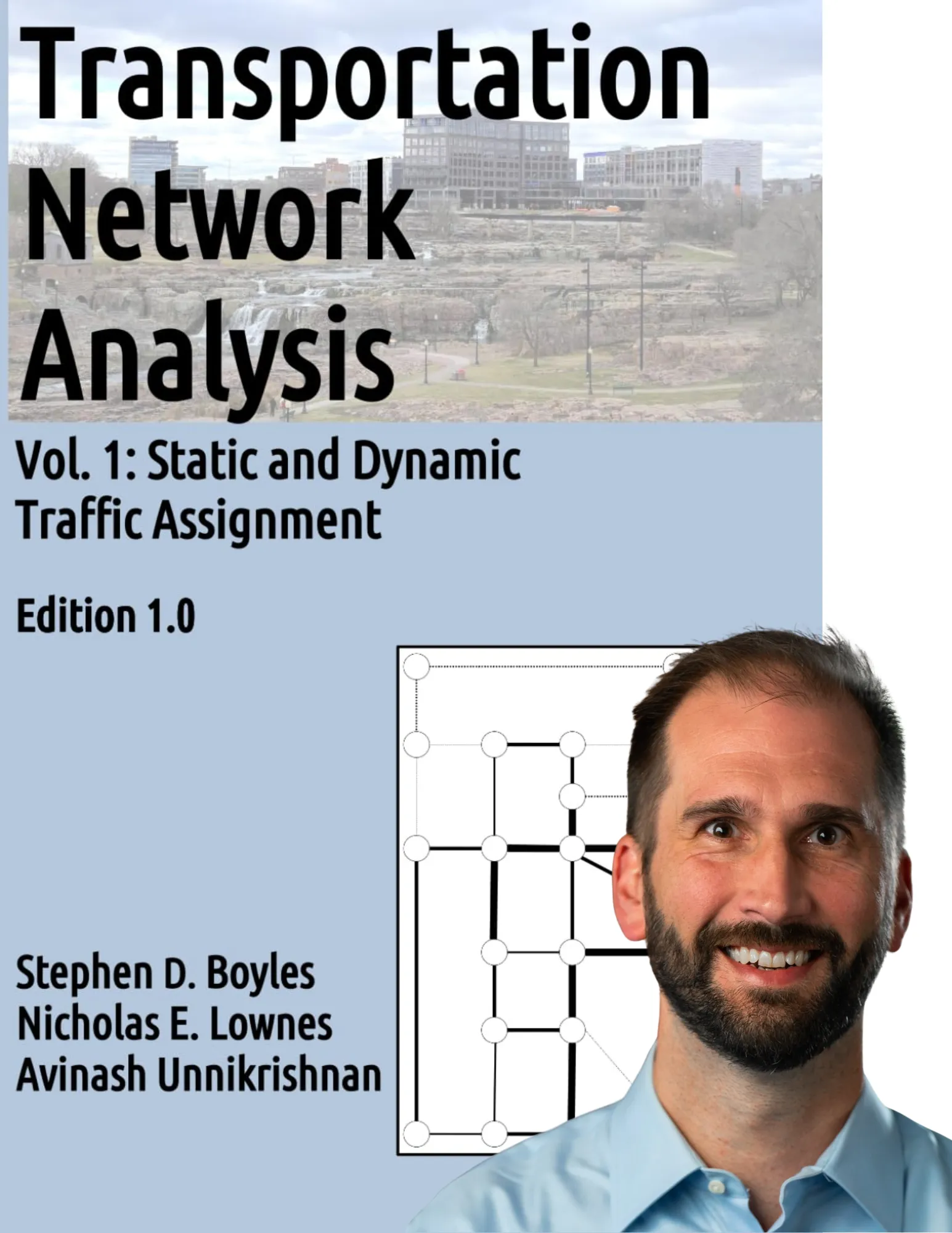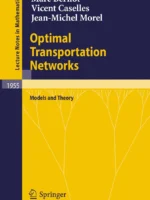Transportation Network Analysis Review
Transportation Network Analysis by Stephen D. Boyles, Nicholas E. Lownes, and Avinash Unnikrishnan is a graduate-level synthesis of traffic assignment: user equilibrium vs system optimum, and the move from static to dynamic models that capture real congestion and spillback.
Overview
The book covers static assignment foundations—existence and uniqueness conditions, variational inequalities, convex formulations—and classical algorithms such as Frank–Wolfe and path/bush methods. It then develops dynamic user equilibrium with network loading models: point and spatial queues, CTM, and LTM, together with practical issues of convergence and stability.
Summary
Static chapters formalize the difference between selfish routing (UE) and coordinated routing (SO), quantify efficiency gaps, and explain why simple gradient methods stall near the solution. Dynamic chapters emphasize experienced travel time rather than instantaneous costs and show the iterative loop of loading the network, recomputing paths, and updating flows. The text stresses the sensitivity of results to OD profiles, capacities, and centroid connector placement.
Authors
Boyles, Lownes, and Unnikrishnan write in a course-ready style: precise definitions, clear proofs where needed, and practical notes for modelers who must defend assumptions to stakeholders.
Key Themes
Network structure shapes outcomes; model choice must match the decision context; algorithm design is a trade-off between scalability and accuracy; calibration and sensitivity analysis are non-optional.
Strengths and Weaknesses
Strengths: coherent UE/SO treatment, solid intuition for algorithms, and a realistic perspective on when DTA adds value. Weaknesses: dense math in places and limited software “how-to”; dynamic models remain sensitive to noisy inputs.
Target Audience
Graduate students in transportation, practitioners building regional models, and researchers who need a unified reference on static and dynamic assignment.
Favorite Ideas
The UE vs SO contrast and price-of-anarchy intuition; critiques of Frank–Wolfe near optimum; CTM and LTM as complementary loading frameworks; the outsized impact of centroid connector logic on DTA validity.
Takeaways
Match tool to task: use static assignment for broad policy screening and DTA when time dependence, queue spillback, or departure-time choice matters. State assumptions explicitly, calibrate inputs, test sensitivity, and verify equilibrium criteria before drawing policy conclusions.






